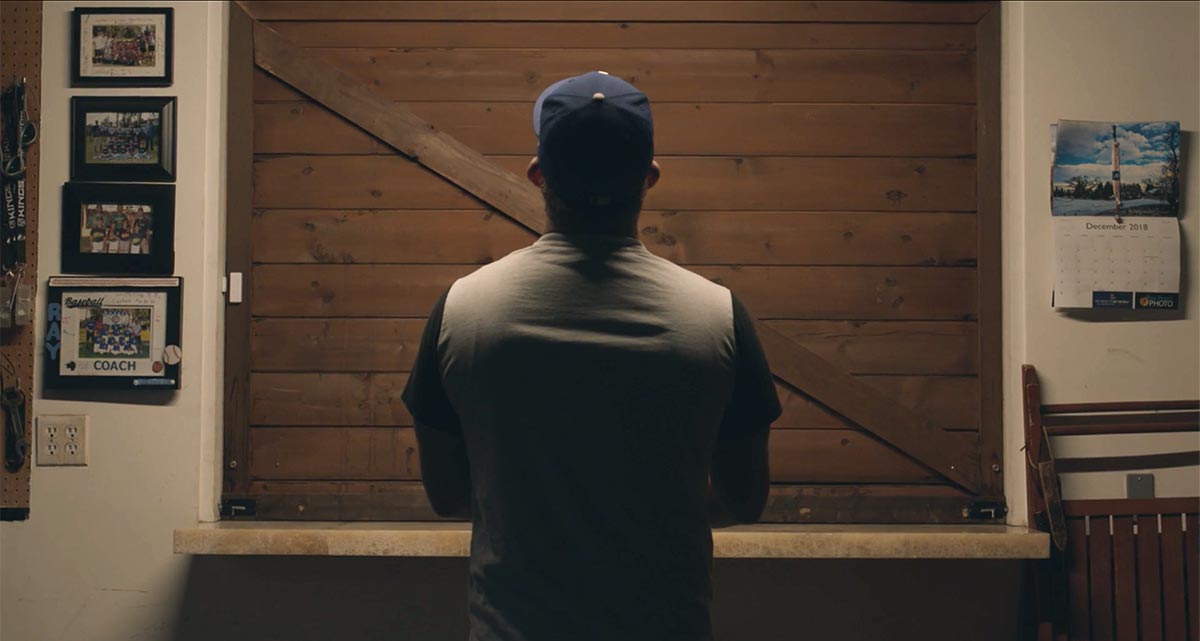
Pop the champagne and drop the beat …
We just sold our first brand. And, yes, the math in that outlandish headline is right: a 15,500% increase from our initial investment.
In early 2018, 4x400 — Common Thread Collective’s ecommerce holding company — acquired 80% of FC Goods. The price? $5,000. In Oct. of 2020, we sold it for $1.2M. Minus the founder’s 20% and less broker’s fees, that nets out to $780k. From $5k to $780k: 15,500% ROI.
Of course, that clickbaity calculation is far from the whole story.
That’s why I’ve recorded a special episode of the Ecommerce Playbook Podcast with Taylor Holiday and Aaron Orendoff … to reveal everything. All the numbers. The entire journey. Every struggle. Every loss. Every win.
At the end of the episode, Taylor and I share 10 takeaways — the biggest and most-tactical lessons we learned. Best of all, I’ve summarized them all with examples and illustrations in this article to make the takeaways easier to take away.
But first, let’s break down FC Good by the numbers …
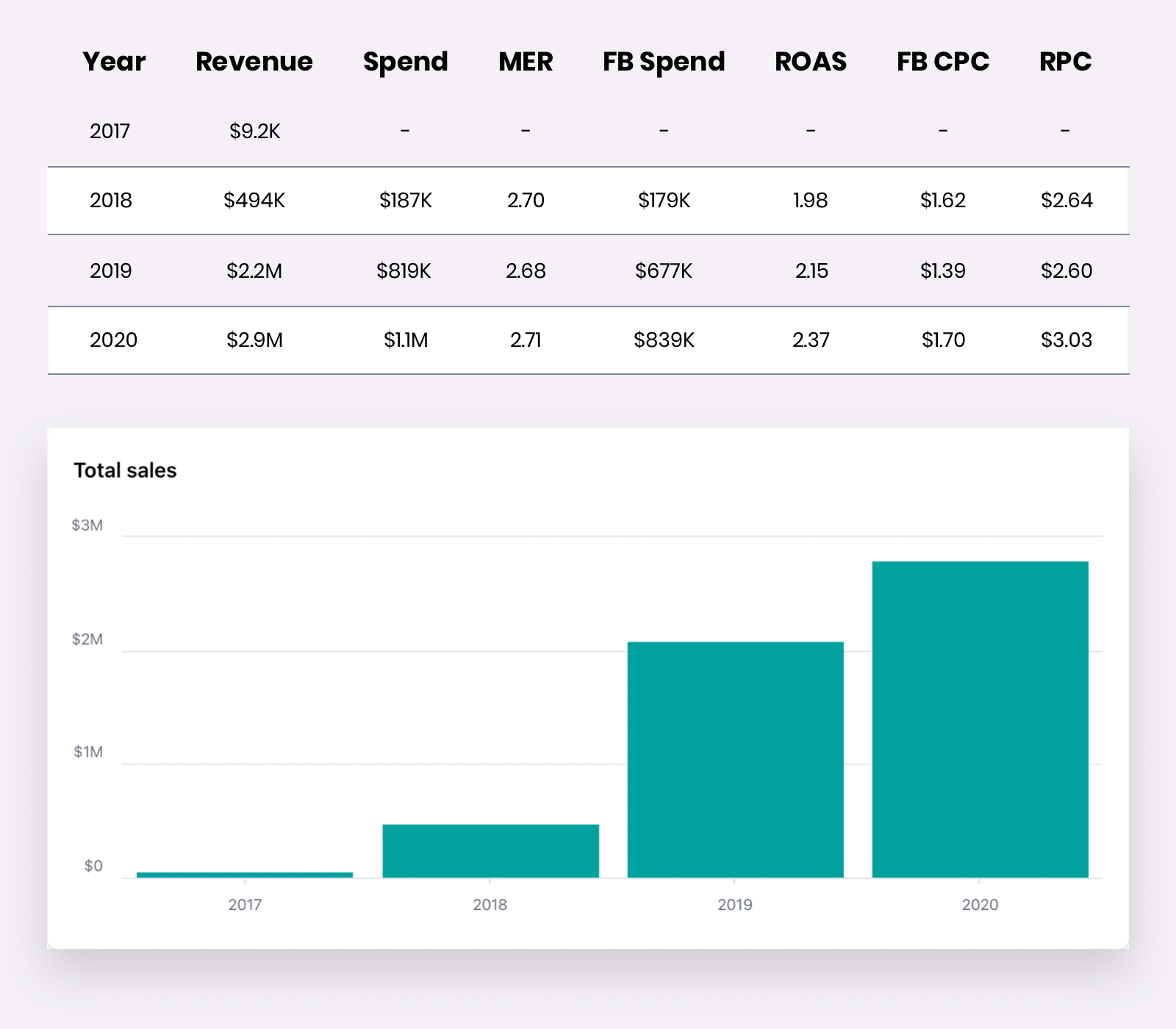
Easily, the most important metrics were:
- Revenue per click (RPC): Conversion rate times AOV
- Marketing efficiency rating (MER): Total revenue divided by total ad spend
By driving RPC up, we were able to hold MER flat; meaning, we dramatically increased overall spend — +287% in 2019, for example — without losing paid efficiency.
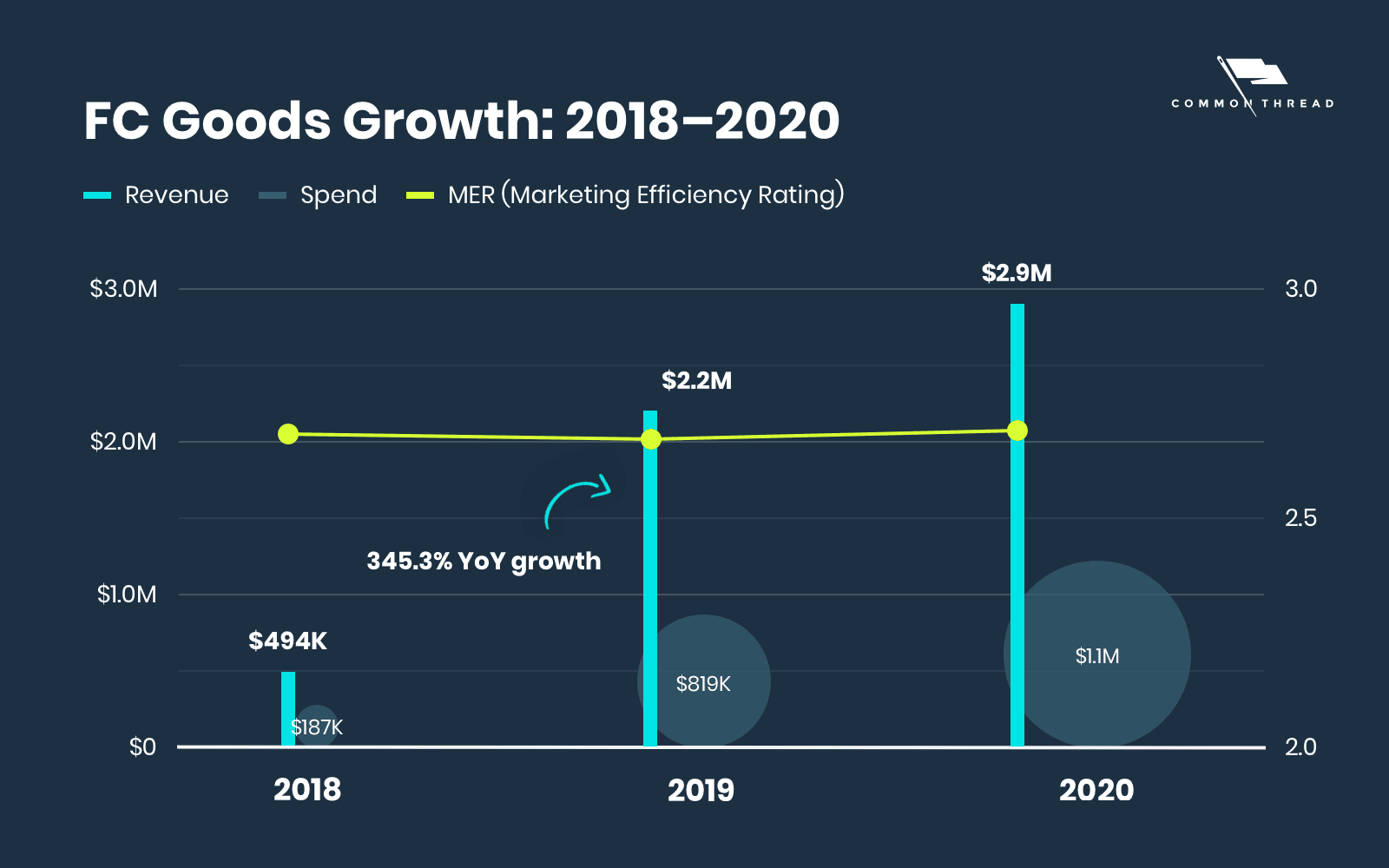
Deal Structure
- $1.2M for 100% of the company
- 3x multiple on EBITDA
- $900k upfront; $300k earnout, ranging from $150k-$450k
- 4x400 team still consulting (thus the earnout)
- Common Thread Collective running ads and email moving forward as an ecommerce growth team
- M&A Advisor: FE International
Alright, let’s get into the takeaways …
1. A Great Product With a Great Story Can Get You Really Far
Andrew:
The fundamental reason people buy from FC Goods isn’t because of advanced media-buying methods or exceptionally original marketing. It’s because we could run Facebook ads to a product that essentially sells itself with a clear story.
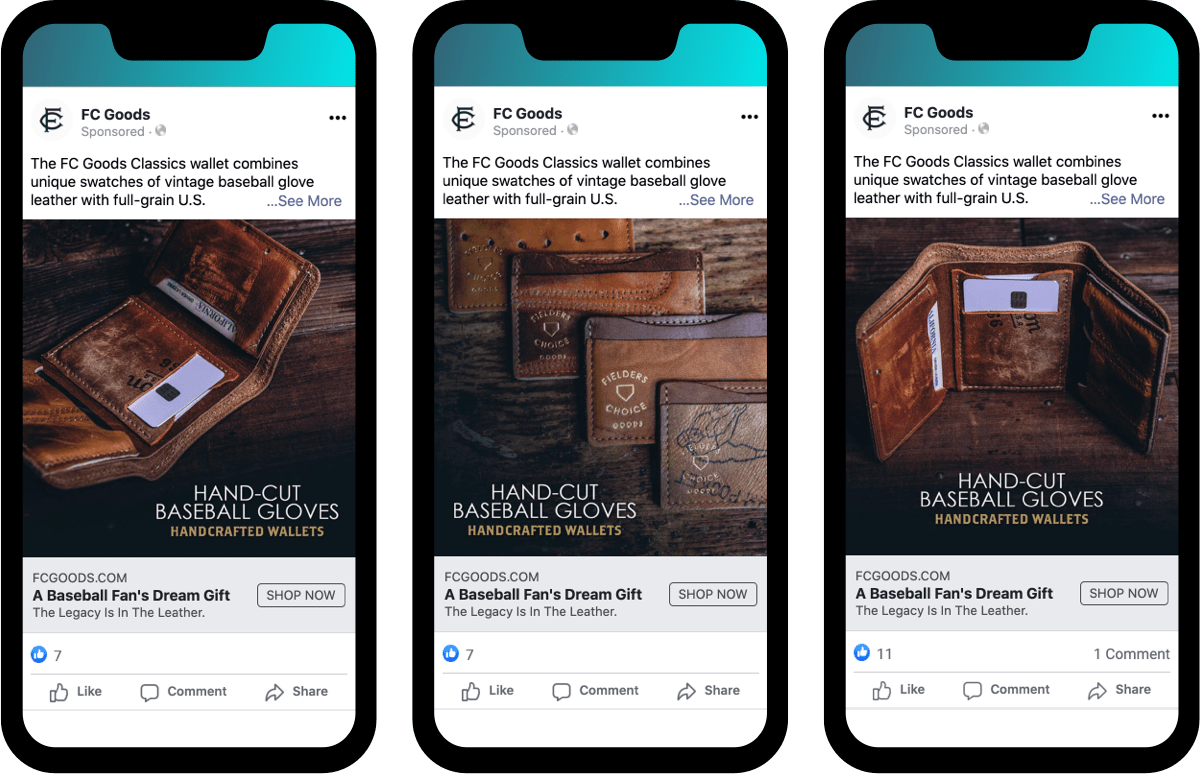
That’s why the revenue per click (RPC) was good right away. People feel a deep connection to baseball. If you order an FC Goods Classics Wallet — and you should go order one right now — you will love it.
It is beautifully made. Robbie did a killer job on the packaging. It’s presented beautifully. There are artisans who work on that. Plus, I can validate that in the five-star ratings and in the low return rate. Every objective piece of data says people love the product.

Put that all together and there’s no substitute.
2. Gifting Products Make Cash Flow Management Challenging
Taylor:
When peak moments consolidate your revenue — and those moments are preceded by long seasons of not peak moments — it forces you to outlay a bunch of cash for a bunch of product all while predicting against big moments that are hard to determine.
That made getting the inventory volumes right a huge challenge.
Rob Clemons, 4x400 supply-chain manager, literally muted himself on Zoom when Andrew made the announcement and danced. He described it not as managing inventory but “maintaining the beast.”
That meant utilizing cash to fund as many baseball gloves as possible month over month, coupling this with delayed production and payment terms when ramping up production in non-peak moments.
Still, as an early stage business, we missed seasons because we didn’t have the cash or didn’t know how to assess the risk right.
3. Clarity Is Job Number One in Ecommerce Marketing
Andrew:
This is something I come back to all the time: Our biggest wins, the moments of real increased conversion rate, all centered on one thing …
People have to know exactly what they’re getting.
We spent about $800,000 on one version or another of this ad:
Literally a guy showing the wallet up close and saying, “Here’s what the product is. Here’s why it’s unique. Here’s what the return policy is.” It’s just so clear.
Every time we took some effort into making our product page more obvious, more clear about what they’re buying — every single time — we saw conversion rates boost:

Now, we’re applying some of that product page build to all of our other brands. We’re shooting the same explainer videos. There’s structural stuff on Modern Fuel that looks exactly like the FC Good’s product page layout for exactly these reasons.
Clarity is job number one. If it’s not clear enough, people are going to experience friction.
4. Price Is More Elastic Than You Think for Novel Products
Taylor:
We all know what a can of Pepsi costs. You can’t sell it for $50. Not only is there deep price anchoring, there’s also lots of optionality.
Leather baseball glove wallets have no price anchoring mechanism for consumers. One of the first things that Weiser [who bought the brand] did was take some of the limited-edition products and raised the price massively.
As an owner, you have a deep sense of the price. The consumer has no idea.
When you’re in a product category where no real alternative exists, you can keep moving the price up. It’s one of the first things we did after we bought the brand. We just didn’t do it enough.
When they don’t have an anchor point — and if you make it awesome — they’ll pay for it.
5. You Can’t Scale on Customer Acquisition Alone
Andrew:
You have to solve other things around the business, whether that’s LTV or word of mouth, some kind of mechanisms of what Taylor and I called on a previous episode, thanks to Web Smith, an organic marketing flywheel.
The durable DTC brand:
— Web Smith (@web) November 7, 2020
- began with little-to-no funding
- has an organic marketing flywheel
- has a tribe of repeat purchasers
- understands earned media
- maintains 5x+ ROAS
- focuses on core competency
- outsources the rest
Most of all: stodgier VCs won't understand it.
After a purchase, that customer has to be valuable to you. When they’re not, scale is severely limited.
If I could go back to replay one part of FC Good’s story, it’d be this. We have other brands that are in early stages as well. What I would do is try to solve that problem better, sooner, and faster.
We more than doubled growth year-over year. But when I was asked, “Can you double it again next year?” The answer was no. And it was because we didn’t fix the organic and repeat customer issues.
6. Product Drops Are Powerful Marketing in Themselves
Taylor:
Normally, we think about marketing as a thing that happens creatively with videos, copy, design, and campaigns. But product development — and especially product releases — can be its own mechanism for marketing.
The thing that FC Goods did well is they would launch these limited edition collections of thirty, sixty, or a hundred wallets around a story.
There was the Negro League Series, where we partnered with the Negro League Baseball Museum to celebrate the league’s 100 year anniversary. The Heroes Collection. The Nellie Fox Series. We had a Signature Series where we found portions of signed gloves and included them in the wallets.

There was no revenue to be made on selling thirty wallets.
But they were great ads, we captured a ton of emails, we built connections to customers, we were able to do really cool things that drove our CTRs up. And, they created moments, reasons for people to come back and engage with us.
Those were product-as-marketing, not product as inventory or revenue creation.
And it’s not just something 4x400 is using in its other brands, like 31Bits, it’s something we’ve taken to the other side of the fence at Common Thread Collective to help our clients think about creating their own unique moments.
7. Niche or Novel Wins in DTC Facebook Advertising
Taylor:
I have this two by two matrix I like to draw. Basically, the X axis is how unique and special your product is. The Y axis, how unique and special is your advertising?

You have to get really honest about where you are on that spectrum of how unique and novel your product is to determine how much effort you need to put into the storytelling.
Some brands require great advertising because they need great advertising to sell the product. Some don’t.
This goes back to our days at QALO, when we put a grey silicone ring on white background and simply wrote, “Silicone wedding ring,” on it. Nobody had ever seen it before, and it was fantastic.
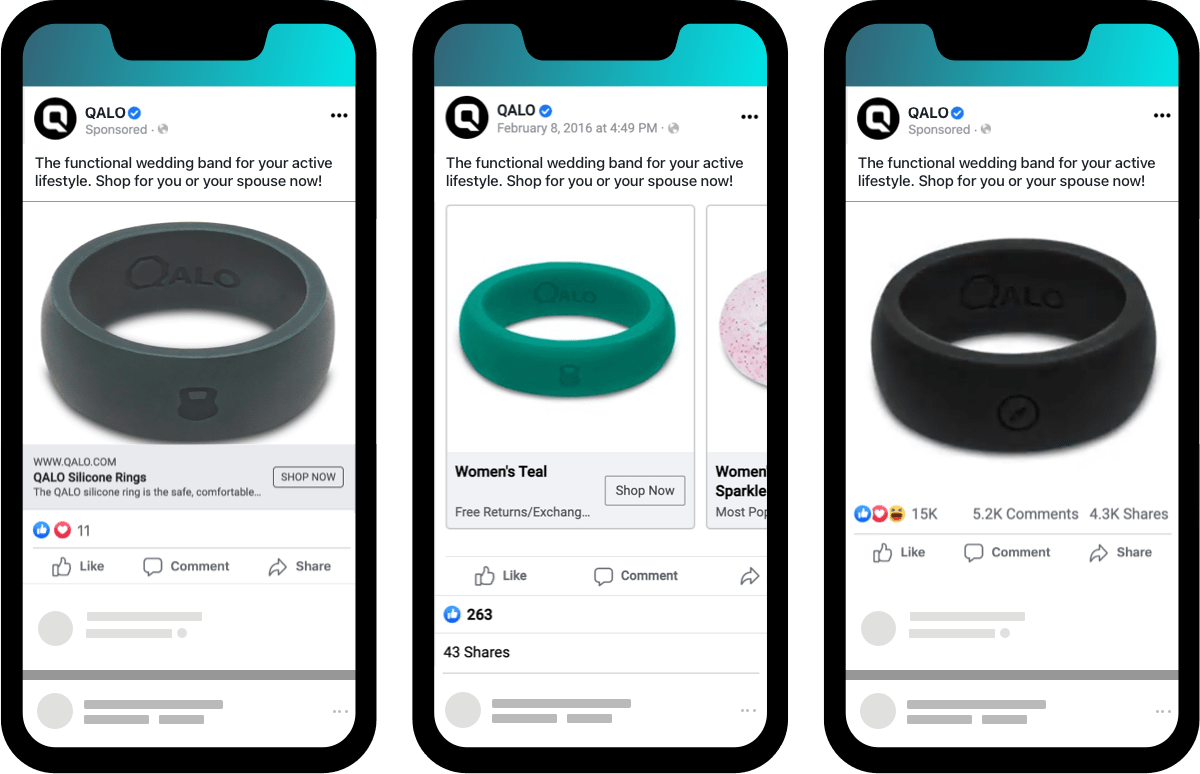
We ran the shit out of that carousel ad with the changing ring color. It got us $1.29M on $481k spent. A 2.7 lifetime ROAS on prospecting.
For FC Goods, the explainer ad we mentioned deserves a lot of credit. But the point is when you have a product that appeals to a very specific niche — like this one has with the baseball audience — or a product that’s novel, something people haven’t seen it before … then it’s way easier than selling a commodity.
You just have to get incredibly honest with yourself about which one you’ve got.
8. Value-to-Weight Ratio Is a Crucial Part of Your Delivery Cost
Andrew:
Leather is a funny thing. Its cost has actually gone down the last few years. The gross margin on the product for FC Goods isn’t incredible — around 65 points. But because the wallets are relatively small and not super heavy, it doesn’t cost very much to ship it to people.
Too many people go into ecommerce without realizing how much of your margin shipping can eat up. We certainly didn’t realize that in the early days of Slick Products, and we’re now seeing that advantage in some of our other brands. In fact, Weiser has incredible logistics. I’m sure they’ll make it even cheaper to ship.
Why? Because there’s massive savings that go straight into your bottom line by simply making it easier and cheaper to get it to the customer.
The other thing about that is we could also ship to the customer very fast for pretty cheap. Sixty-five points of margin would not have been doable without a high value-to-weight ratio. All the stuff about story, clarity, and marketing wouldn’t have mattered without the built-in advantage.
9. Doing Something You Truly Enjoy Has Real, Tangible Value
Taylor:
All right … I’m going to get a little sentimental, but it’s a real thing.
And you heard Andrew describe it earlier, his brain went to this brand naturally because he loves baseball. And if you have to go apply yourself to a thing that you hate or that you only kind of like, you will be resistant to doing it.
When you love something, the energy you can put into it before you get drained is staggering.
I loved FC Goods. Every day I owned it, I was proud of it. I was excited. I wanted to show it to friends. And our entire company naturally allocated, sometimes over allocated, themselves to it because of that.

FC Goods was that way. I loved it every day we owned it and I hope nothing but the best from it going forward because it’s just a freaking really cool brand.
10. Doing Something You Truly Enjoy Has Real, Tangible Value
Andrew:
That’s a great point and the best spot to end this conversation. From my perspective, it was the same.
Taylor and I both are huge baseball guys. And even beyond being a big baseball guy, the level of effort that went into the creative work, the video, all the hand lettering for every custom Limited Edition logo that Robbie ever made, it’s the same thing.
Like with each of those Limited Edition releases, we’d create these 20ish-page, full-color booklets to include with each order. Robbie and I both really put our heart into those, and we’d get so excited every time we’d get them back from the printer. The one we did for our “The 70s” Series (wallets made from 1970s baseball glove leather) has these 100% original drawings and gorgeous design from Robbie that captured the feel of the 1970s and I still love to thumb through it because it’s just so cool.

I didn’t write the copy for that one, but I did for most of the others.
It probably wasn’t the best use of my time, but I just couldn’t keep myself from reading up on, say, the full story of the 1919 “Black Sox” scandal (which is this super infamous moment in baseball history).
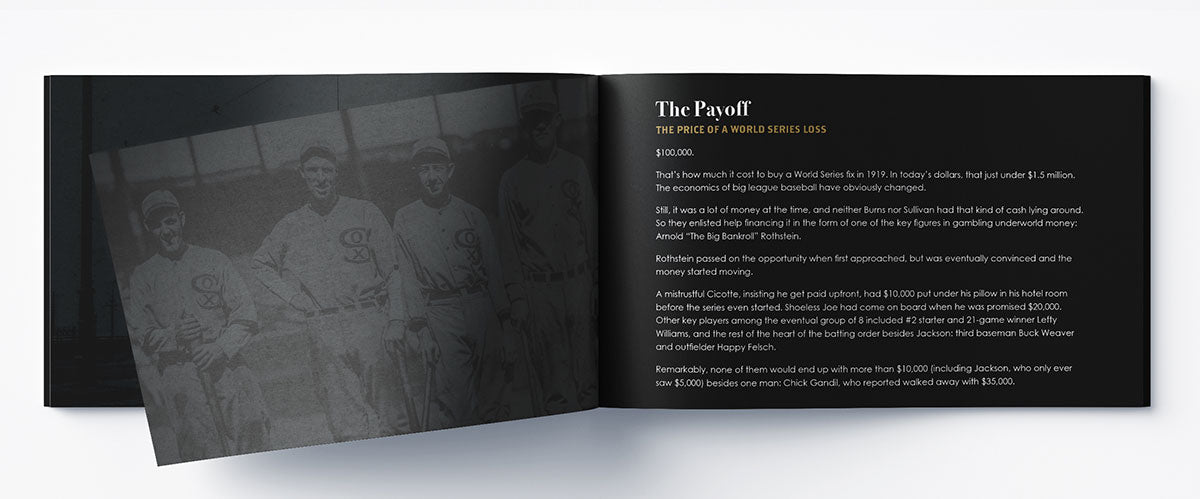
Or, from waxing poetic about the glories and travails of being a catcher. And I wasn’t even ever a catcher. For that matter, I wrote the script for this video too.
Sometimes we’d joke that it would’ve been more fun to shut down everything else and just go run FC Goods.
That would’ve required smaller visions for where we wanted to take the whole ecosystem, our lives, and all those kinds of things, but it would’ve been fun, because … it’s just really, really fun.
We won't send spam. Unsubscribe at any time.

Andrew is the CEO of 4x400, Common Thread Collective’s holding company that acquires, launches, and scales ecommerce brands. Over the last year, he’s helped lead three of 4x400’s brands to over 400% YoY growth. If you’d like to connect with Andrew about all things DTC, reach out via Twitter or LinkedIn.

